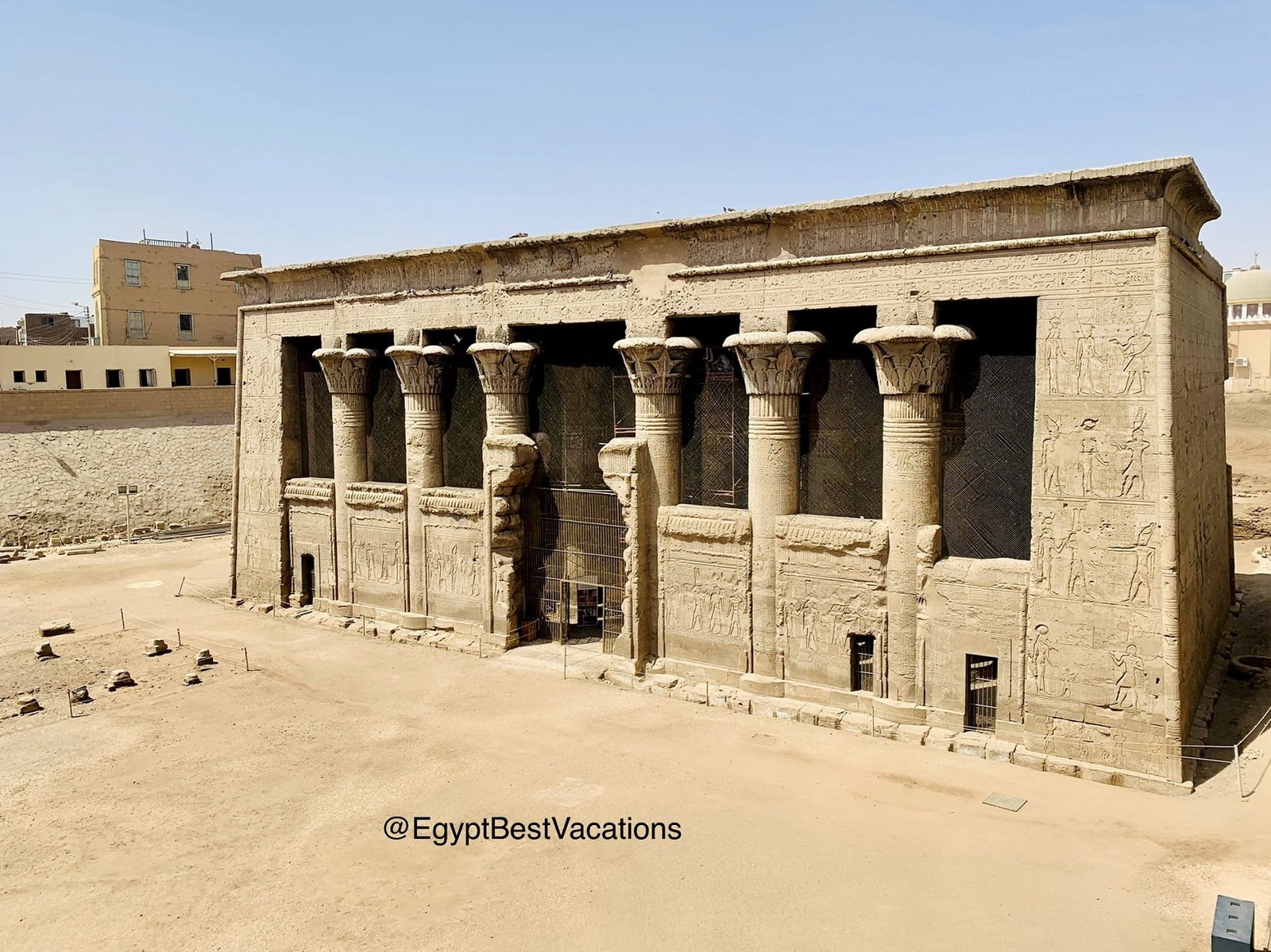Exploring the Temple of Esna: A Window into Ancient Egypt
The Temple of Esna stands as a remarkable testament to Egypt’s ancient grandeur. It is located in the city of Esna, along the west bank of the Nile. This temple, primarily dedicated to the ram-headed god Khnum. It offers travelers a glimpse into the religious and cultural life of the Greco-Roman era. For those seeking to uncover the layers of Egypt’s past, the Temple of Esna is a must-visit site.
History of the Temple of Esna
The history of the Temple of Esna dates back to the Ptolemaic and Roman periods, with construction spanning several centuries. The temple was built on the foundations of an earlier structure. But most of what remains today was completed during the reign of Emperor Claudius (41-54 AD). The temple’s rich history reflects Egypt’s evolution under Greek and Roman rule, where old traditions blended with new influences.
The Temple of Esna is significant for several reasons. It serves as a well-preserved example of the religious architecture of the Greco-Roman period in Egypt. The intricate carvings and hieroglyphics on its columns depict a blend of Egyptian and Roman styles. So, it provides insights into the fusion of cultures during this era. Temple of Khnum at Esna is dedicated to Khnum, one of the oldest deities in Egyptian mythology. Khnum was considered the creator god, associated with the Nile’s life-giving waters and the fertility of the land. His worship at Esna highlights the city’s importance as a religious center in ancient times. The temple’s reliefs vividly illustrate Khnum’s role in the creation myth, emphasizing his significance in Egyptian religion.
Description of Esna Temple
The Temple of Esna is a striking example of ancient Egyptian architecture, about 55 kilometers south of Luxor. This temple, dedicated to the god Khnum, stands partially below street level due to the gradual buildup of surrounding debris over millennia, adding to its mystique as visitors descend into the past.
The structure that remains today is primarily the hypostyle hall. A large, rectangular space supported by 24 towering columns. Each column is intricately decorated with detailed floral capitals. Showcasing designs inspired by the lotus, palm, and papyrus—plants that held deep symbolic meaning in ancient Egypt. The vibrant colors that once adorned these carvings still can be seen today which remains evident in the precision of the reliefs.
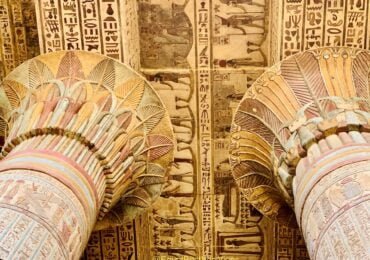
The walls of the Temple of Esna are adorned with hieroglyphics and reliefs depicting scenes of religious rituals. Scenes of offerings to Khnum, and the divine king in communion with the gods. These inscriptions are not only artistic masterpieces but also historical records that provide insight into the religious practices and beliefs of the time.
One of the most fascinating features of the temple is the astronomical ceiling. A ceiling is adorned with celestial scenes that include the zodiac signs, planets, and other heavenly bodies. This ceiling highlights the advanced knowledge of astronomy possessed by the ancient Egyptians and their belief in the divine order of the cosmos. Despite the fact that only a portion of the original temple has survived, the Temple of Esna remains an awe-inspiring site.
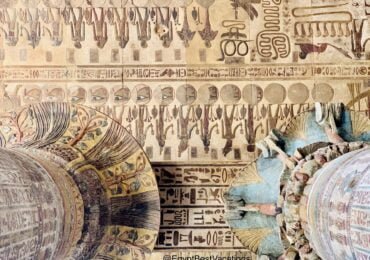
Gods of the Temple of Esna
Temple of Esna is dedicated to different gods as following;
Khnum
The Temple of Esna is deeply rooted in the worship of Khnum, the ram-headed god of creation. Khnum was believed to have crafted humanity on his potter’s wheel, shaping life from the clay of the Nile. As the god who controlled the waters, Khnum played a vital role in ensuring the fertility of the land. This makes him a central figure in the religious life of Esna.
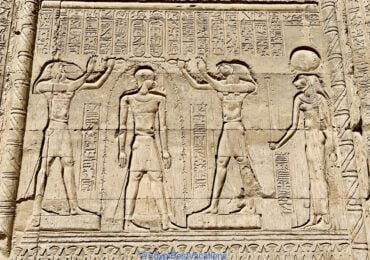
Menhit
Khnum was not worshipped alone; he was accompanied by his divine family. His consort, Menhit, was a lioness-headed goddess symbolizing war and protection. Menhit was revered as a fierce warrior who defended the pharaoh and the land of Egypt.
Nebtu
Nebtu, another consort of Khnum, represented the lushness of the earth. She was seen as a goddess of fertility and agriculture, complementing Khnum’s role as the nurturer of life. Together, Khnum, Menhit, and Nebtu formed a powerful triad of creation, protection, and sustenance.
Heka
His son, Heka, was the god of magic and medicine. In ancient Egyptian belief, Heka was the personification of the magic that permeated every aspect of life. He was believed to possess the power to heal and protect, making him an essential deity in the pantheon of gods worshipped at Esna.
Neith
Neith, a goddess associated with war, hunting, and wisdom, also held a prominent place in the religious life of Esna. Often depicted as a fierce warrior goddess, Neith was revered for her protective qualities and her association with the primeval waters from which creation emerged. Together, these deities embodied the essential aspects of life, death, and rebirth, making the Temple of Esna not just a place of worship. But a center of spiritual life where the mysteries of existence were honored and celebrated.
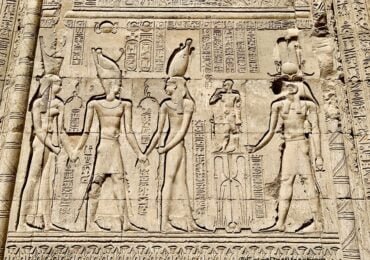
Esna in Ancient Egypt
Esna, known as “Latopolis” in ancient times, was an important city in Upper Egypt. The city’s strategic location made it a vital religious and trade hub, particularly during the Greco-Roman period. Esna was famous for its weaving industry and was known for producing fine linens. The city’s religious significance is underscored by the Temple of Esna, which was the focal point of worship and a gathering place for the community.
Why the Temple of Esna Is Important
The Temple of Esna is important because it represents the continuity of religious practices in Egypt. Even as the nation transitioned through various rulers and empires. It stands as a symbol of resilience, with its structure surviving centuries of change. The temple’s inscriptions also provide valuable information about the religious rituals, festivals, and daily life of the time, offering a window into the past for modern-day travelers.
Is the Esna Temple Worth Visiting?
Absolutely, the Esna Temple is worth visiting. While it may not be as famous as Luxor or Karnak, it offers a unique perspective on Egypt’s history. The temple’s relatively secluded location means it is less crowded, allowing visitors to explore its grandeur without the throngs of tourists found at more popular sites. For travelers interested in ancient Egyptian history and culture, the Esna Temple provides an intimate and enriching experience.
What Is Esna Known For?
Esna is known for its historical and cultural significance in ancient Egypt, particularly during the Greco-Roman period. The city was a key religious center, with the Temple of Esna serving as the heart of its spiritual life. Esna was also renowned for its production of fine textiles, which were highly valued throughout the region. Today, the city is a treasure trove of ancient history, with the Temple of Khnum at Esna being its most prominent landmark.
The Temple of Esna offers a rich tapestry of history, religion, and culture that continues to captivate visitors from around the world. As you explore its halls and study its intricate carvings, you’ll gain a deeper appreciation for the ancient world and the legacy that endures in Egypt today.
How to get to Temple of Esna from Luxor
Visiting the Temple of Esna from Luxor is a straightforward and rewarding journey. It offers a chance to explore one of Egypt’s lesser-known yet significant ancient sites. Here’s how you can reach the Temple of Esna:
By Private Transfer or Tour:
The most convenient way to travel from Luxor to the Temple of Esna is by a private transfer or tour. The temple is located about 55 kilometers (34 miles) south of Luxor, and the drive takes approximately one hour. Egypt Best Vacations provides a daily guided tours to Esna Temple with our exclusive Luxor day tours.
By Nile Cruise:
Many Nile cruises traveling between Luxor and Aswan make a stop at Esna. If you’re on a cruise, the visit to the Temple of Esna is often included in the itinerary.
By Public Transport:
For a more budget-friendly option, you can take a local minibus from Luxor to Esna. Minibuses depart from Luxor’s main bus station and travel to Esna regularly. However, this option may be less comfortable and takes longer due to frequent stops along the way.
Regardless of the mode of transport you choose, visiting the Temple of Esna from Luxor is a rewarding experience, offering a peaceful escape from the more crowded tourist sites and a deeper connection with Egypt’s ancient past.

